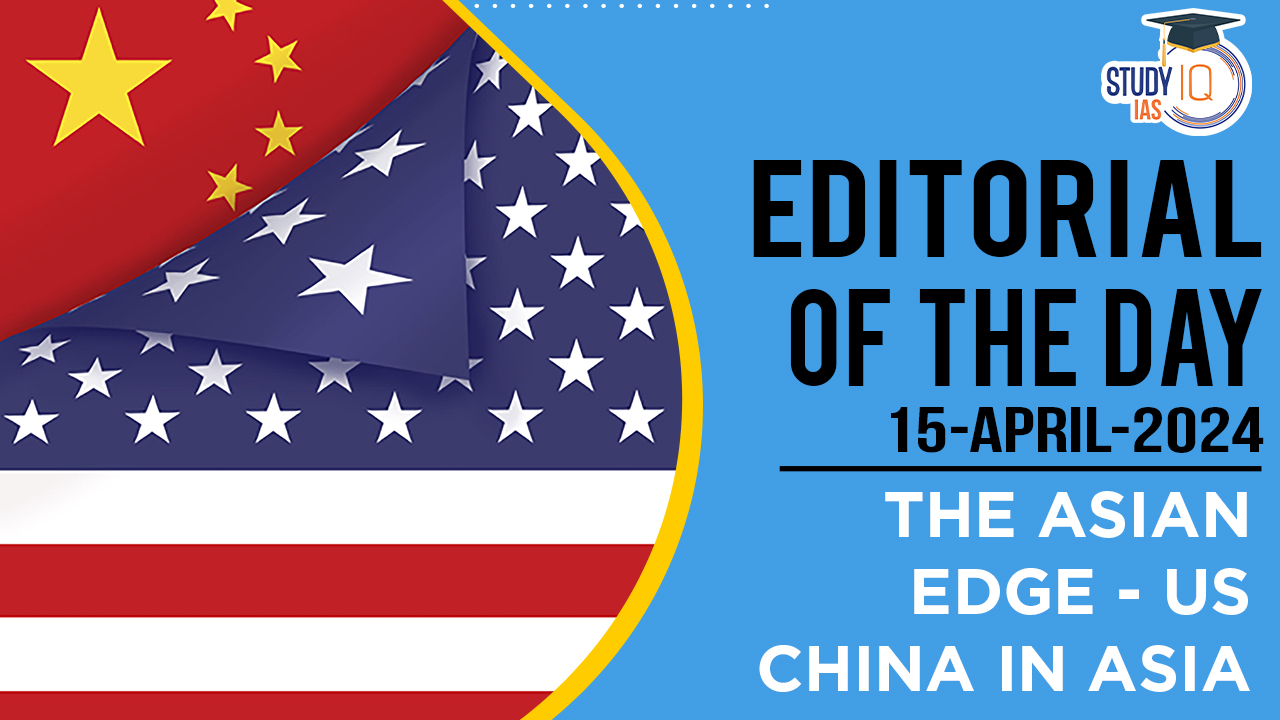Table of Contents
Context: Recent US summits with Asian allies (Japan, Philippines) and China’s reaction suggested a new era of political and military manoeuvring in Asia, with potential for major conflict.
US-Asia Alliances
- US summits with Japan and the Philippines were seen as a counter to China’s growing influence.
- Japan:
- Shifting from a pacifist stance to potential military power.
- Agreed to deeper military cooperation with US, including:
- Integrated command structures.
- Increased defence spending.
- Joint weapons development.
- Joining the US in defending the Philippines’ territorial sovereignty in the South China Sea.
- US-Japan-Philippines trilateral economic cooperation plan.
- Philippines:
- Facing pressure from China in the South China Sea.
- US-Philippines agreement seen as a challenge to China’s Belt and Road Initiative.
China’s Response
- China views US actions as creating a “mini NATO” and promoting “bloc politics” in Asia
- Efforts to counter US influence: Engaged in bilateral talks with various countries such as Russia, Taiwan, Vietnam and Indonesia.
India’s Position
- Caught between the US and China, India has a crucial role to play.
- India has a history of failed attempts at rapprochement with China.
- Ex: India has been engaged in a prolonged military standoff with China in the Himalayas.
- It is also part of an expanding strategic partnership with the US.
- Restoration of peace on the India-China border is a precondition for any future political reset.
Potential Consequences
- A direct US-China confrontation in Asia could have global repercussions.
- India would be inevitably impacted by any military conflict between the two powers.
Way Forward
- Strengthen Diplomatic Channels: All involved nations should enhance diplomatic efforts to prevent escalations and misunderstandings.
- Regular dialogues can help manage disputes, particularly in the South China Sea, and foster cooperation on broader regional issues.
- Promote Multilateralism: Encourage participation in multilateral platforms like ASEAN, the East Asia Summit, and APEC to discuss and address security concerns, economic cooperation, and political stability in Asia.
- This can help to balance relations and reduce the potential for bilateral tensions to escalate into larger conflicts.
- Enhance Defense Transparency: Nations should increase transparency regarding military capabilities and intentions.
- This could include sharing information about military exercises and arms developments openly to reduce the likelihood of misinterpretations leading to conflict.
- Economic Interdependence: Further integrate economies through trade agreements, investments, and joint ventures that benefit all parties involved.
- Economic ties can serve as a deterrent against military conflicts, as the cost of war would outweigh the benefits of peace.
- Conflict Resolution Mechanisms: Develop and agree on new or strengthen existing conflict resolution mechanisms specifically tailored to address the unique challenges of the Asia-Pacific region.
- This could include creating a dedicated mediation body or expanding the mandate of existing bodies to address specific disputes like those in the South China Sea.


 Hydrogen Valley Innovation Clusters (HVI...
Hydrogen Valley Innovation Clusters (HVI...
 Global Carbon Project Report on India’...
Global Carbon Project Report on India’...
 Key Methods of DNA Identification: Techn...
Key Methods of DNA Identification: Techn...

























